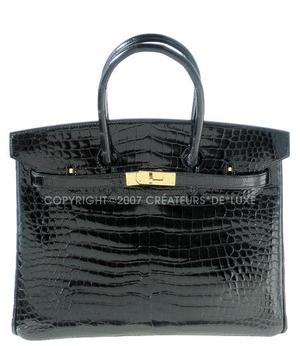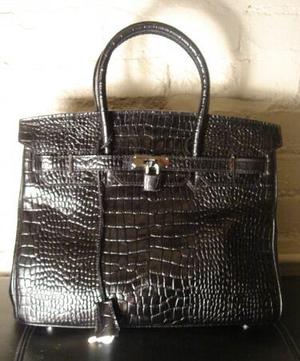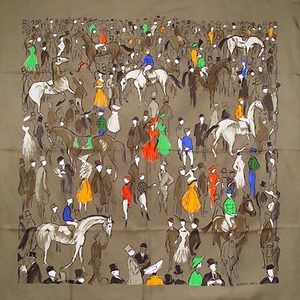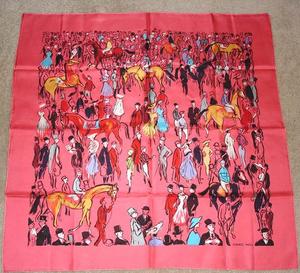It used to be that Canal Street was the place to get the goods -- the red-hot goods, that is. I'm sure they are still doing business -- but these days, if you are serious about selling your fake designer goods, you are much better off becoming a cyber-con. Over the last few years, eBay has boomed beyond all expectations. We have read the Sunday supplement articles that trumpet the impressively gargantuan figures of that virtual marketplace: over one hundred million registered users, and profits of six billion dollars for 2006. But there is one figure that has not received as much media attention, because little has been done to ascertain its precise measurements. The elusive figure, you ask? The number of eBay buyers that have handed over their money in good faith, and gotten scammed. This next number may provide a hint: According to the US Chamber of Commerce, the counterfeit market is at $500 billion-a-year, and they estimate that in twenty years it could skyrocket to $2 trillion-a-year. It doesn't take a savvy economist to know that much of that growth is attributable to the proliferation of online auction sites.
I picture a well-heeled, fashionable woman shelling out thousands for a designer bag she picked out online, waiting breathlessly by the mailbox for its arrival, eagerly unwrapping the packaging, and then slowly realizing that the priority shipping she insisted on far outpriced the item she is holding in her hands. Then I picture her either sobbing inconsolably, or googling the gun laws for her state. Trust me -- there is more than one reason that I only deal with the real McCoy in my eBay luxury goods venture. Women these days are deadly serious about their purses. But all kidding aside, this story is sad. And I know it happens, because I have to do a lot of convincing of once-burned consumers, a lot of hand-holding and reassuring emailing. And while this whole scenario of ripping off someone by selling them a fake is upsetting and unfortunate, it's also unsurprising. Because there is little, in fact almost no, recourse for the buyer who gets scammed on eBay.
When someone unknowingly buys a fake, naturally they will first attempt to contact the seller. But when their angry emails bounce back as non-deliverable, they may as well throw in the towel. (There isn't even a number to call -- eBay's customer support is only via email.) There is the option of "feedback," comments that users can post on a seller's site, but if your seller has vanished like a traveling snake oil salesman, you are just screaming into the virtual void. And presumably the seller, who can switch "storefronts," i.e. screennames, with ease, will turn up elsewhere like a bad penny. It is a dream come true for anyone wanting to make a dishonest dollar. Tracing the physical location of a counterfeiter through the internet is extremely difficult and time-consuming, and would require the intervention of the auction sites authorities. Without professionals working on the case, a single seller can elude identification for months or even years, swapping out email addresses and P.O. Boxes.
Not surprisingly, there is a slew of registered eBay sellers peddling fake Gucci, Chanel, Burberry, Louis Vuitton, Hermes, etc. Some have prices that are dead giveaways that the items are imitations, but many are trying for top dollar. One example is a seller that deals with "Hermes" scarves. He/She sold scarves on eBay in a style called Paddock, a scarf pattern serious collectors recognize -- but not in the colors this seller had. However, if you were no expert, just a person saving up your pennies for your first scarf indulgence, you could easily be duped into paying the same for one of these fake scarves as you would for an actual Hermes one. Which is exactly what happened in this case, to a number of innocent victims. I've also seen fake Hermes Birkin auctions end in the $3000-4000 dollar range, and I've seen some of the fakes firsthand. Well crafted in Italy, definitely passable in an online photograph, but an item that Canal street stores would sell for maybe $150. Amazing profit to be made: If that seller sold 9 fake Hermes handbags in a 30-day period, his annual haul is over a quarter million dollars. Of course, you can simply stay away from the online marketplace. But if you are collector of rare or hard-to-get items, or living in an out of the way place, eBay can be a dream come true. (To extend the example, Hermes has only fifteen stores in the U.S., and the purported wait time for a Birkin is three years.) And the fact remains -- this is a problem that could be, if not solved, vastly eradicated.
And what is eBay doing? Well, since eBay makes its commission regardless of whether or not the item is a fraudulent one, they haven't exactly made rooting out counterfeit luxury goods their top priority. They talk a game about "intellectual property" and "ongoing investigations," but they have tried to put the brunt of the policing back onto the companies whose brands are most commonly pirated. Unfortunately, the companies involved have a stock response: buy the items at our stores, or deal with the consequences. And in a new twist, Tiffany and Louis Vuitton/Dior are suing eBay, claiming the site is violating trademark rights by profiting on the auction of fake merchandise. (Louis Vuitton/Dior says in its lawsuit that in a study made over the first six months of 2006, 90% of the items bearing their trademark were fake.) Solutions that might be costly for eBay -- changing PayPal policies, stricter site policing, or conducting individual investigations -- are derided by the company as impractical. However, with a good chunk of that 500 billion dirty dollars floating through the online auction arena, washing their hands of the problem will only keep them looking clean for so long.
Can YOU tell the real eBay Hermes item from the knockoff?

Hermes black crocodile purse ---
retail value approx. $32,000.00, listed at $55,000 on eBay (mark-up due
to purported three-year wait time in
stores)

Counterfeit "Hermes" black crocodile purse---
retail value approx. $150, listed at $12,999 on eBay

Hermes silk scarf, Paddock design---
retail value approx. $325

Counterfeit silk scarf, Paddock design---
retail value approx. $20, sold on eBay for $325